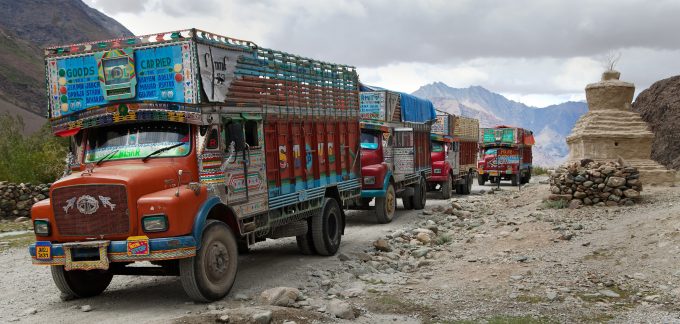$10bn Vadhavan – a game of political musical chairs
The will of the people…
TFII: SOLID AS USUALMAERSK: WEAKENINGF: FALLING OFF A CLIFFAAPL: 'BOTTLENECK IN MAINLAND CHINA'AAPL: CHINA TRENDSDHL: GROWTH CAPEXR: ANOTHER SOLID DELIVERYMFT: HERE COMES THE FALLDSV: LOOK AT SCHENKER PERFORMANCEUPS: A WAVE OF DOWNGRADES DSV: BARGAIN BINKNX: EARNINGS OUTODFL: RISING AND FALLING AND THEN RISING
TFII: SOLID AS USUALMAERSK: WEAKENINGF: FALLING OFF A CLIFFAAPL: 'BOTTLENECK IN MAINLAND CHINA'AAPL: CHINA TRENDSDHL: GROWTH CAPEXR: ANOTHER SOLID DELIVERYMFT: HERE COMES THE FALLDSV: LOOK AT SCHENKER PERFORMANCEUPS: A WAVE OF DOWNGRADES DSV: BARGAIN BINKNX: EARNINGS OUTODFL: RISING AND FALLING AND THEN RISING

India’s move to lift cabotage restrictions is benefiting the country’s ports and freight forwarders by boosting domestic transhipment.
According to Global Logistics Solutions India director Naveen Prakash, the decision to allow foreign-flagged vessels to carry domestic cargo between Indian ports is the “most significant announcement” for the industry this year.
Previously, coastal shipping of import/export cargo and empty containers was the exclusive purview of local carriers.
“The foreign-flagged transhipment of containers is a major boost for the movement of agricultural cargo, including fertilisers, meat, dairy, fish, fruit and vegetables,” Mr Prakash told The Loadstar.
“Fifty new coastal berths will come up to connect 7,500 km of India’s coastline, including 19 new berths under development through government funding.”
As well as containerships, he said, the rule change included five-year exemptions for foreign-flagged ro-ro, pure car-carrier, LNG and project cargo vessels.
“Combining these factors with new terminals that are highly efficient is surely going to bring down logistics costs, and big-volume clients, such as automobile manufacturers, are already working this out,” Mr Prakash added.
He said the need for “consolidation of smaller volume shippers” to fill transhipment vessels was a good opportunity for forwarders.
“It will take a great deal of marketing, which is not the forte of traditional shipping agencies and vessel owners. So they need to tie up with marketing- and sales-centric logistics companies to reach deep markets.
“It’s a good opportunity for forwarders and express logistics companies which already have a good footprint in land transport and will now have access to coastal shipping.”
Cabotage is a controversial topic in India, with the new regulation – implemented on 21 May – strongly opposed by domestic shipping firms, which fear being squeezed out by foreign carriers.
Its supporters claim it is already bringing back transhipment volumes to India from rival hubs in Sri Lanka, Malaysia, Singapore and Dubai, which currently handle around one-third of India’s container cargo.
Earlier this month, shipping secretary Gopal Krishna claimed that 10% of Indian cargo transhipped overseas would return by the end of 2018. And, according to the Container Shipping Lines Association (CSLA) (a lobby group for foreign carriers), transhipment volumes in India rose to 16,543 teu in July, up 43% on the previous month. The CSLA predicted this figure would rise to 200,000 teu within eight months.
However, critics cited in local media have contested the CSLA figures, claiming the majority represents repositioning empty containers. Furthermore, any reduced transport costs achieved through unrestricted cabotage have not been passed on to customers, they say.
For Global Logistics Solutions India, the ocean freight market is booming, with or without the coastal shipping changes. The Mumbai-based forwarder claims to be India’s fastest growing LCL consolidation company, recording 30% year-on-year growth in volumes and revenue, which Mr Prakash said was driven by increasing trade with Japan, Turkey, Vietnam, France and Germany.
“We are very buoyant about the future, as our organisation is sales-centric, helping asset owners to connect with clients and offering them customised solutions.
“We are seeing very big opportunities in e-commerce where our role is to connect manufacturers and certified global vendors to India’s e-commerce marketplace. For example, we have custom built solutions for FBA [fulfilled by Amazon]-type deliveries,” he said.
Comment on this article